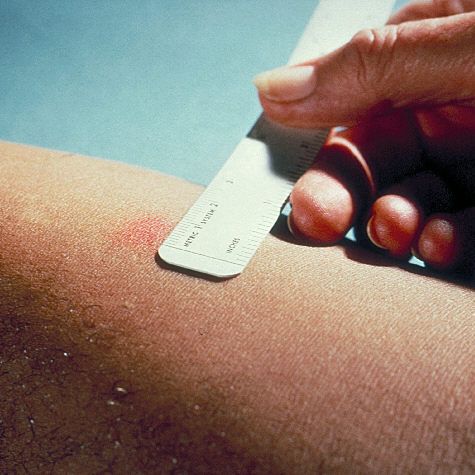Tuberculosis Testing in New HIV Patients Does Not Effect ART Regimen
A comparative study of same-day and seven-day TB test results show there is little difference in HIV treatment adherence or outcomes at 48 weeks.

Despite concern of possible effect on HIV care, patients who received either same-day or seven-day tuberculosis (TB) test results at the time of HIV diagnosis did not differ in neither antiretroviral therapy (ART) nor TB therapy initiation.
The findings, presented at the Conference on Retroviruses and Opportunistic Infections (CROI) 2021 virtual sessions, lessen reason for concern in instances when a newly diagnosed HIV patient may be presenting with TB symptoms.
The Haiti-based trial featuring US investigators led by Nancy Dorvil, MD, of the Les Centres GHESKIO in Port-au-Prince, was a randomized assessment comparing same-day and rapid (seven-day) TB testing and treatment initiation. The trial design was based on previous research showing delays in initiating ART for new HIV patients can be associated with greater risk of loss to follow-up.
“There are limited data on outcomes with same-day testing and treatment for patients with TB symptoms at HIV diagnosis,” investigators wrote.
Dorvil and colleagues observed the 2 TB test result deliveries, with same-day patients receiving results and initiating TB medication or ART therapy on the day of HIV diagnosis, and rapid patients receiving results in the first week and starting ART on day 7 if TB was not confirmed.
As the trial observed patients from November 2017 – December 2019 and dolutegravir replaced efavirenz as first-line anchor HIV care in December 2018, investigators additionally assessed for outcomes associated with either initiated ART treatment.
The trial’s primary outcome was 48-week HIV RNA <200 copies/mL in treated patients.
Investigators randomized 500 patients 1:1 to either TB testing method. Median patient age was 37 years old, 46.8% were female, and median CD4 count was 278.
Among the rapid TB test group, 40 (97.6%) participants diagnosed with TB started therapy for the infection; 244 (97.6%) started ART for HIV.
Among the same-day TB test group, 45 (100%) diagnosed with TB started therapy for the infection; 250 (99.6%) started ART. As such, Dorvil and colleagues observed no statistically significant difference in TB treatment ART initiations.
What’s more, the test arms did not differ in 48-week outcomes of ART: 224 (89.6%) rapid test patients were retained in care, and 171 (76.3%) achieved HIV-1 RNA <200 copies/mL. Comparatively, 219 (87.6%) same-day test patients were retained in care, and 155 (70.8%) had achieved HIV-1 RNA <200 copies/L.
Regarding first-line anchor HIV care, viral load-testing patients who initiated ART with dolutegravir more frequently reported superior outcomes per <200 copies/mL (82.4%) versus patients who initiated ART with efavirenz (68.4%; P = .001).
Dorvil and colleagues concluded that seven-day and same-day ART and TB treatment initiation do not differ in 48-week HIV outcomes, as well as care for concurrent TB.
“Viral suppression rates were lower than anticipated, which we attribute to high rates of transmitted EFV resistance, political instability with a national lockdown, and the SARS-CoV-2 outbreak in Haiti during the study period,” they wrote.
What’s more, the outcomes support an associated improved viral suppression rate with dolutegravir versus efavirenz, evidencing the benefit of rapid clinical transition from the former ART first-line anchor option, to dolutegravir.
